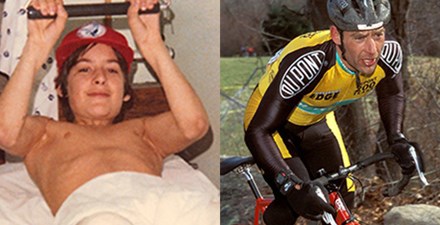Physical Therapy Guide to Scoliosis
Scoliosis is a condition that affects the normal shape of the spine. It alters a person's back alignment and posture. With scoliosis, the spine moves to the side and turns. Scoliosis can occur at any time during the life span. It is more often found during the teenage years. About 2% to 3% of the general population have scoliosis. It occurs in males and females equally. Yet, in women, the condition can be more progressive and may require more treatment. Scoliosis can range from mild to severe. Treatments vary from person to person. People with more severe cases may need surgery. A team approach is the best way to manage scoliosis. The team should include the family, an orthopedic doctor or surgeon, an orthotist (a specialist in bracing), and a physical therapist.
Physical therapists are movement experts who improve quality of life through:
- Hands-on care.
- Patient education.
- Prescribed movement.
You can contact a physical therapist directly for an evaluation. To find a physical therapist in your area, visit Find a PT.
What Is Scoliosis?
Scoliosis as a curvature of the spine to the side that includes rotation. It causes changes to posture and the alignment of the back. A person cannot correct scoliosis by “standing up straight.” On an X-ray, the spine may appear to have an "s" or "c" shape. The Cobb angle, a measurement of the spine’s curves, determines if scoliosis is present, and its severity. A person has scoliosis when they have greater than a 10 degree to 15 degree Cobb angle.
Types of Scoliosis
Adolescent idiopathic scoliosis. AIS is the most common type of scoliosis in children ages 10-18. Idiopathic means there is no known cause. Around 30% of children with AIS have a family history of the condition.
Other types of scoliosis include:
Congenital scoliosis. A defect in the bones of the spine causes scoliosis at birth. The curve becomes more noticeable as the child grows.
Neuromuscular scoliosis. Conditions of the nervous system cause this type of scoliosis. Conditions such as cerebral palsy or muscular dystrophy weaken the muscles that support the spine. On an X-ray, the spine may appear to have a "c" shape.
Early-onset scoliosis (in infants and youth). There is no known cause of early-onset scoliosis. Infantile scoliosis describes the condition when found between birth and three years. Juvenile scoliosis describes it when found before age 10.
How Does It Feel?
Scoliosis does not usually cause pain. But pain may occur as the abnormal curves of the spine affect the surrounding muscles and joints. These changes may alter body alignment, posture, and movement patterns. This can cause irritation and pain. Muscles that support the spine may become imbalanced and lead to a loss of strength and flexibility. A person with scoliosis may notice:
- Uneven shoulder height.
- Uneven hip height.
- The appearance of a difference in leg length.
- An uneven waistline.
- A bony bump on one side of the back.
- A general sense that the two sides of the body don't line up.
- Pain in the areas around the spine, including the shoulder, pelvis, and hip.
- Pain with specific movements or activity.
How Is It Diagnosed?
A physical exam or school screening usually can detect scoliosis. A child’s doctor, school nurse, or physical therapist may do these screenings. The goal of screening is to detect conditions such as scoliosis so that treatment can begin as soon as possible.
Your child’s doctor or physical therapist will ask you to show activities or positions that are hard to do or cause pain.
The physical therapist also will identify any other symptoms that suggest scoliosis. If you see a physical therapist first, they will refer you to a doctor for an X-ray to confirm the diagnosis.
How Can a Physical Therapist Help?
Treatment options for scoliosis include physical therapy, bracing, and surgery. Your physical therapist or surgeon will decide the best course of treatment based on:
- Type and severity of the scoliosis.
- Age.
- Guidelines established by the Scoliosis Research Society.
Physical therapists provide services and treatment during all phases of scoliosis. They help people function at their personal best. Physical therapists help people manage scoliosis during bracing, and before or after any needed surgery.
Your physical therapist will work with you and your child to develop and tailor a treatment plan specific to the type and severity of the scoliosis. They will work with you to help you reach your goals. They and your doctor will check progress throughout treatment.
Physical therapy treatments may include:
Education. Physical therapists provide information about how scoliosis affects the body and movement. They will teach you strategies to help manage the condition.
Range-of-motion exercises. Your physical therapist will design a treatment program to improve or maintain movement. They will select exercises to help keep and improve range of motion, if it is limited.
Strength training. Your physical therapist will design a treatment program to strengthen the muscles around the spine. They also will help strengthen other parts of the body weakened by scoliosis. Areas may include the hips, shoulders, and even the head and feet.
Manual therapy. Physical therapists can help restore motion to joints and muscles restricted by scoliosis. They may use hands-on (manual) therapy to help guide and retrain movement patterns.
Modalities. Treatment, such as ice, heat, electrical stimulation, or ultrasound can help people reach their physical therapy goals. Your physical therapist will choose the right methods for your specific case.
Functional training. Physical therapists are experts in assessing movement. They can teach proper movement patterns and retrain the body for optimal movement and function.
Can This Injury or Condition Be Prevented?
Scoliosis cannot be prevented. The goal of your treatment team is to help:
- Prevent the condition from getting worse.
- Improve postural balance.
- Reduce the signs and symptoms of scoliosis.
Research is ongoing to find treatments to stop scoliosis from getting worse. A recent study has shown that bracing can limit the progression of spinal curves. The main goals of physical therapy are to manage symptoms and improve your ability to move and function. Treating scoliosis works best when the health care team includes the patient, their family, and the following providers:
- Orthopedic doctor or surgeon.
- Orthotist (a professional who makes and fits devices and braces for people).
- Physical therapist.
What Kind of Physical Therapist Do I Need?
All physical therapists are prepared through education and clinical experience to treat a variety of conditions or injuries. You may want to consider:
- A physical therapist with experience in treating people who have scoliosis or other orthopedic or musculoskeletal conditions.
- A physical therapist who works regularly with children and teens.
- A physical therapist who is a board-certified specialist, or who has completed a residency in orthopedic or pediatric physical therapy. This physical therapist will have advanced knowledge, experience, and skills that may apply to people with scoliosis, especially young athletes.
- A physical therapist who has received advanced training in scoliosis-specific exercises.
You can find physical therapists in your area with these credentials and clinical expertise on Find a PT, a tool built by the American Physical Therapy Association.
General tips when looking for a physical therapist (or any other health care provider):
- Get recommendations from family, friends, or other health care providers.
- When you contact a physical therapy clinic for an appointment, ask about the physical therapists' experience in helping people with scoliosis.
- Be prepared to describe your symptoms in as much detail as possible during your first visit. Make a note of what makes your symptoms better or worse, and the goals you want to reach through physical therapy.
The American Physical Therapy Association believes that consumers should have access to information to help them make informed health care decisions and prepare them for their visit with a health care provider.
The following resources offer some of the best scientific evidence related to physical therapy treatment for scoliosis. They report recent research and give an overview of the standards of practice both in the United States and internationally. They link to a PubMed* abstract, which also may offer free access to the full text, or to other resources. You can read them or print out a copy to bring with you to your health care provider.
Schreiber S, Parent EC, Hill DL, Hedden DM, Moreau MJ, Southon SC. Patients with adolescent idiopathic scoliosis perceive positive improvements regardless of change in the Cobb angle: results from a randomized controlled trial comparing a 6-month Schroth intervention added to standard care and standard care alone. BMC Musculoskelet Disord. 2019;20(1):319–329. Article Summary in PubMed.
Yagci1 G, Yakut Y. Core stabilization exercises versus scoliosis-specific exercises in moderate idiopathic scoliosis treatment. Prosthet Orthot Int. 2019;43(3):301–308. Article Summary in PubMed.
Zapata KA, Sucato DJ, Jo C. Physical therapy scoliosis-specific exercises may reduce curve progression in mild adolescent idiopathic scoliosis curves. Pediatr Phys Ther. 2019;31(3):280–285. Article Summary in PubMed.
Scoliosis Research Society. https://www.srs.org. Accessed August 12, 2021.
International Society on Scoliosis Orthopaedic and Rehabilitation Treatment. https://www.sosort.org. Accessed August 12, 2021.
Expert Review:
Jul 23, 2021
Revised:
Jul 23, 2021
Content Type: Guide
Scoliosis
Jill Ordorica
PT, DPT, board-certified clinical specialist in pediatric physical therapy
Stephen F. Reischl
PT, DPT, board-certified clinical specialist in orthopedic physical therapy, on behalf of the Academy of Orthopaedic Physical Therapy
You Might Also Like...
Patient Stories
'My Life Has Been Given Back To Me By A Physical Therapist'Jul 28, 2021
Today he is a professional cyclist and a physical therapist. But as a teenager Tim Haitz moved so awkwardly that other kids called him "swivel."
Patient Stories
Physical Therapy: Cyclist Overcomes Challenges to Scoliosis, Degenerative DiskNov 20, 2016
"She instilled it in me that I was going to get that 100% recovery—100% for me, not for the average person, but for me."
Podcast
Success Story: Infantile Scoliosis and Pediatric Physical TherapyAug 5, 2014
Infantile scoliosis is rare, but a 4-month is making significant improvement in strength and range of motion through pediatric physical therapy.

